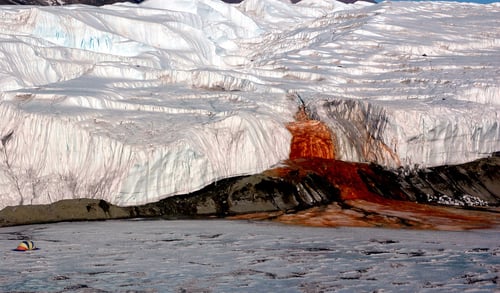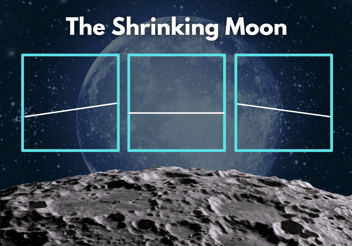Antarctica vs. Europa - Kesler Science Weekly Phenomenon and Graph
Picture a spot that's pitch-black, packed with salt, almost devoid of oxygen, and freezing cold (-13°C). Doesn't sound too inviting, right?
You wouldn't expect to find life there, but that's exactly what's going on under Antarctica's Taylor Glacier, home to the bizarre "Blood Falls."

For the longest time, scientists were baffled by the red liquid oozing out of the glacier. They thought it was red algae at first, but it turned out to be iron oxides seeping from an ancient, super-salty lake.
When scientists studied the falls, they found hardy microbes that have been trapped in the lake for millennia. These microbes - 17 different varieties of them! - likely don't use oxygen for respiration.
Scientists are excited by this find because it's more evidence that life can exist in places we would never consider habitable. What might we find on icy moons like Europa? Maybe space isn't as cold and lifeless as it seems.
Astrobiologists study life on our planet to understand if life could exist on other planets.They look for forms of respiration that don't need oxygen, for example, or ways that organisms get energy without sunlight.
Astrobiologists have also studied bacteria and other organisms to see at what temperatures they can live and grow.
It seems the coldest temperature at which bacteria can still grow is -20°C. Some plants and invertebrates can survive at -70°C, but they cannot grow properly below -2°C.
The graph below compares the temperatures of a warm day in Antarctica, a cold day in Antarctica, and an average day on Europa (an icy moon orbiting Jupiter).
.png?width=600&height=428&name=Europa%20Antarctica%20graph(2).png)
You can ask your students: based on the graph above and the research of astrobiologists, should we expect to find bacteria living on Europa that is similar to the bacteria on Earth? Why or why not?
Something else to think about: a day/night cycle on Europa takes a little more than three Earth days to complete. If this graph was created with actual hours instead of parts of a day, how would it look different?
If I brought this graph to my class, here are a few questions I'd ask my students:
💡What is the warmest recorded temperature on Europa? At what time of day does this happen?
💡What is the temperature difference between midnight in Antarctica during August and midnight in Antarctica in January?
💡How do the temperatures in Antarctica in August compare to the temperatures in January? Why do you think this is? (Hint: think about Antarctica's position on planet Earth).



